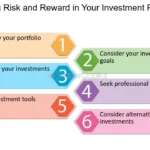In the world of investing, numbers, charts, and data often dominate the conversation—but behind every financial decision is a human being influenced by emotion, bias, and instinct.
One of the most powerful psychological forces affecting investors is loss aversion—a behavioral finance concept that explains why we feel the pain of losses more intensely than the joy of equivalent gains.
In this blog, we’ll explore:
- What loss aversion is and how it works
- Its impact on investment behavior
- How it influences risk management decisions
- Strategies to overcome it
- Why mastering your psychology is just as important as mastering the market
What Is Loss Aversion?
Loss aversion is a concept developed by Daniel Kahneman and Amos Tversky in the field of behavioral economics. According to their research, the emotional impact of losing $100 is about twice as strong as the pleasure of gaining $100.
In simple terms: Losing hurts more than winning feels good.
This bias affects everything from how investors buy and sell stocks to how they manage risk and construct portfolios.
How Loss Aversion Affects Investors
Here are a few real-world behaviors driven by loss aversion:
1. Holding Losing Investments Too Long
Investors often hang on to losing positions, hoping they’ll “bounce back,” because selling would make the loss real.
“If I don’t sell, I haven’t really lost anything.”
— A common (but flawed) mindset.
2. Selling Winners Too Early
To lock in gains and feel “safe,” some investors sell their winners too soon—missing out on long-term compounding.
This is called the “disposition effect”—the tendency to sell winning investments and hold losers.
3. Avoiding the Market After a Loss
After experiencing a market crash, some investors become overly conservative or exit the market entirely, fearing further loss—even when data shows long-term recovery.
4. Overreacting to Short-Term Losses
Market dips may cause investors to panic-sell, even if fundamentals haven’t changed. These reactions are often emotional, not rational.
5. Overemphasizing Safety Over Growth
Loss-averse investors may underinvest in growth assets like equities, settling for ultra-safe options that may underperform inflation over time.
Why Loss Aversion Matters for Risk Control
Understanding loss aversion is essential for effective risk management because it influences how we:
- Perceive portfolio volatility
- React to downturns
- Allocate assets
- Measure performance
Emotional Risk ≠ Real Risk
Emotional risk is the fear of losing money. Real risk is the likelihood of not meeting your long-term financial goals.
Often, avoiding short-term pain leads to long-term underperformance.
Strategies to Overcome Loss Aversion and Manage Risk Better
1. Set Clear Investment Goals
When you tie your portfolio to specific life goals (like retirement, home buying, or college savings), it’s easier to stay the course.
2. Use Dollar-Cost Averaging (DCA)
Investing a fixed amount regularly smooths out volatility and reduces the emotional impact of market swings.
3. Diversify to Manage Volatility
A well-diversified portfolio spreads risk across:
- Asset classes (stocks, bonds, cash, real estate)
- Sectors
- Geographies
Diversification reduces the chance of any single loss derailing your whole strategy.
4. Automate Investing
Remove emotions from the process by automating:
- Monthly contributions
- Portfolio rebalancing
- Dividend reinvestments
Automation helps avoid panic decisions during market turbulence.
5. Reframe Your Thinking
Instead of asking, “What if I lose money?”, ask:
- “What are the risks of not investing?”
- “What does this decision mean for my long-term plan?”
6. Focus on Time in the Market, Not Timing the Market
Trying to avoid losses by jumping in and out of the market often leads to missed opportunities. Historically, missing just a few of the best days significantly reduces returns.
7. Use Stop-Loss Orders Strategically
Stop-losses can help manage large drawdowns—but use them with care. Avoid triggering sales during normal volatility by setting thoughtful thresholds.
8. Work With an Advisor or Coach
Sometimes, an outside perspective can help you make more rational decisions. Financial advisors help align your plan with your psychology.
How Loss Aversion Shows Up in Market Trends
| Situation | Common Emotional Response | Better Approach |
|---|---|---|
| Market Correction | “Sell everything now!” | Stick to your long-term plan |
| One stock drops | “I’ll wait until it recovers” | Reassess based on fundamentals |
| Peer outperforms | “I need to copy them” | Focus on your unique goals |
| New all-time high | “It’s too late to invest” | Dollar-cost average and stay disciplined |
Final Thoughts: Know Yourself, Grow Your Wealth
Loss aversion is a natural human instinct, but it can be destructive if it drives your financial decisions. The key to success in investing isn’t avoiding losses altogether—it’s understanding your behavior, managing risk intelligently, and staying focused on long-term outcomes.


